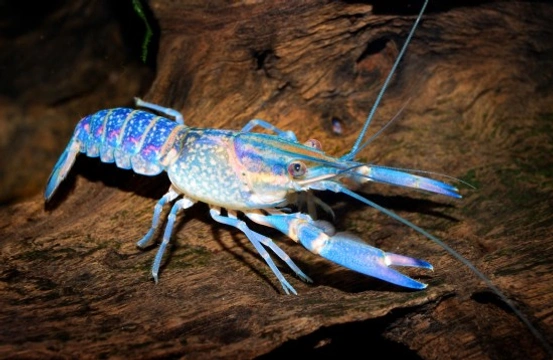Pets
Pets for studWanted petsBreedersAccessories & services
Knowledge hub
Support
Support & safety portal
Can you keep crayfish as a pet?
Crayfish, also sometimes known as crawfish or freshwater lobsters, are crustaceans that are similar in appearance to the lobster, to whom they are related. As well as being an important source of food in some countries and indeed, sometimes offered for sale in supermarkets in the UK, the crayfish lives naturally in the streams, lakes and canals of the UK, and can also make an interesting pet!
Here in the UK, our native crayfish species is the European white-clawed crayfish, and today, these are rather rare. Our watercourses are today full of another species, called the signal crayfish, which is an invasive species that has largely contributed to the falling numbers of our native type.
Because the native European white-clawed crayfish is already threatened in the wild, it is vitally important that you do not trap and catch crayfish in the wild without a permit and a good understanding of identifying the different species. This also means that you should not ever release crayfish of any type into the wild once you have bought and kept them as a pet.
While crayfish are not among the most common of pets in the UK, larger aquatic retailers and specialist pet stores sometimes offer them for sale as pets, and for such an interesting animal, they are relatively low maintenance and easy to keep. So, is a pet crayfish the right choice for you? Read on to learn more!
How to set up a tank for crayfish
You don’t need a particularly large tank to keep crayfish happy, although of course you will need to think bigger if you wish to keep more than a couple! For just a couple of crayfish, a ten-gallon tank is perfectly sufficient. The tank should be situated in a room that has a stable temperature, and that receives plenty of natural light. Cover the bottom of the tank with simple aquarium gravel, to a depth of around three inches. Sloping the gravel towards the front of the tank will mean that waste falls to the front, allowing for easier cleaning.
Add some decoration such as river rocks, stones and ornaments to provide hiding places for your crayfish, and ensure that they are all large enough to prevent your crayfish from getting stuck! Don’t forget that crayfish are adept crawlers and climbers, so stop any ornaments well short of the top of the tank, to prevent escapes! For this same reason, a well secured lid or screen for the top of the tank is vital. Crayfish do not need a light in the top of their tank like many other aquatic animals do, and natural lighting is perfectly sufficient.
When you add your water to the tank, it should only come to about six inches higher than the top of the gravel, as crayfish like to be able to get out of the water as well as to swim.
A filter is essential to keeping crayfish, as they can be rather messy animals! Allow the filter to run and the tank to cycle the water for at least a few days before adding your first crayfish.
Caring for crayfish
When you bring your crayfish home, float the bag that they are in in the tank for an hour before releasing them, much as you would do with fish. Once the water temperature in the bag and in the tank match up, let your crayfish out into their new home!
Clean your crayfish’s tank out regularly, and perform water changes on a weekly basis. Crayfish are rather messy animals, but also very sensitive to poor water quality, and a dirty tank will both begin to smell, and potentially affect your crayfish’s health. De-chlorinate tap water before using it in the tank, and never leave leftover food festering away in the tank in between water changes. The natural pH level of the water in the tank should be neutral, at around pH 7.
Feeding crayfish
Crayfish are scavengers who will eat all manner of things, including plant matter and dead animals and fish in the water. Within the domestic tank, feed a selection of vegetables such as lettuce and other greens, and also meat-based food such as shrimp and fish food pellets. You can also feed your crayfish live food such as mealworms, if these are available to buy locally.
Because of their hard shells, crayfish need plenty of iodine and calcium in their diets, as they moult their shells and need the added mineral boost to allow the new shell to harden off. Offer a special food aimed at crustaceans to provide these essential nutrients too.
Some extra care tips
- You can add live aquarium plants to your crayfish tank, providing that you understand that your crayfish will probably eat them!
- When your crayfish moults, do not remove the shed shell; your crayfish may eat it for the extra nutrients.
- Don’t over-feed your crayfish, nor leave food decaying within the tank.



